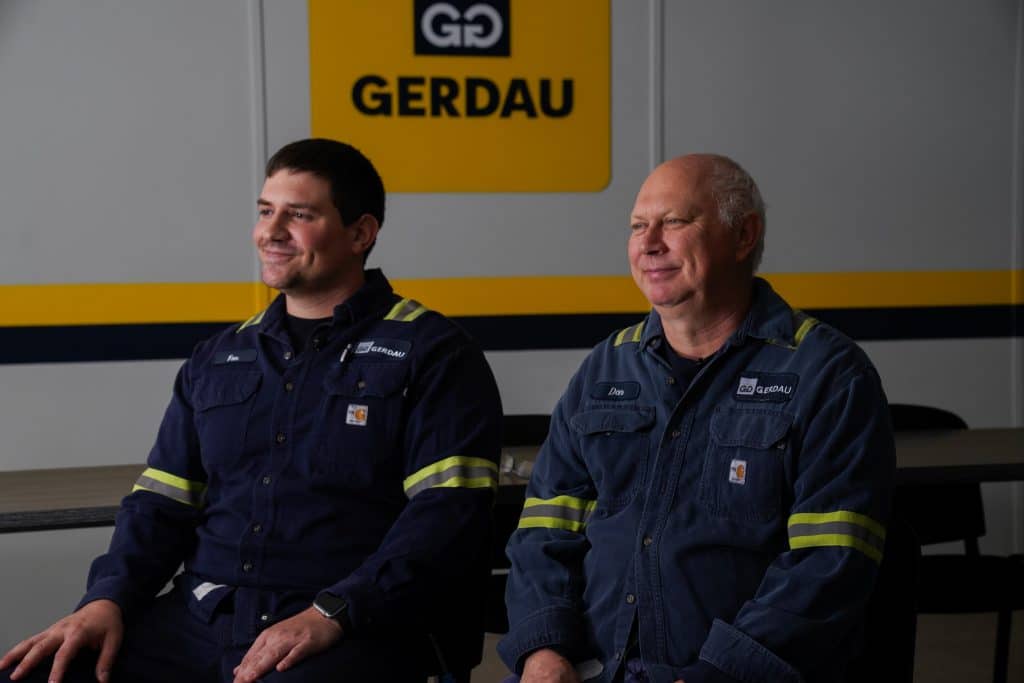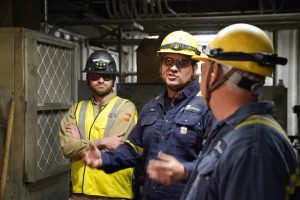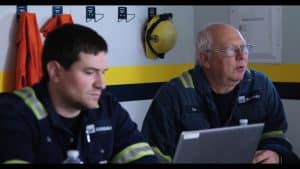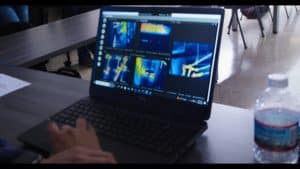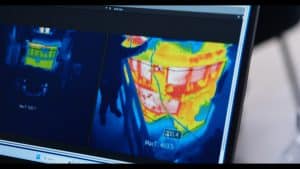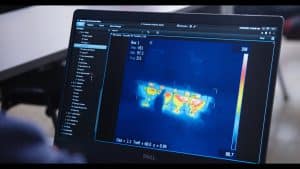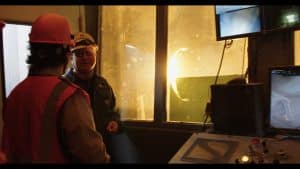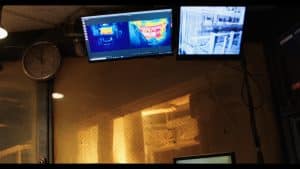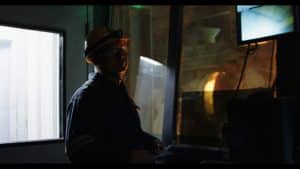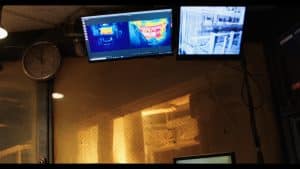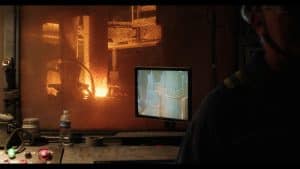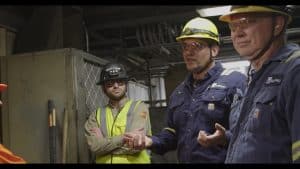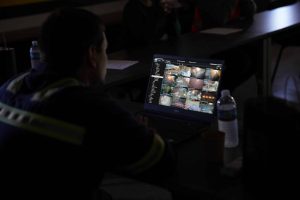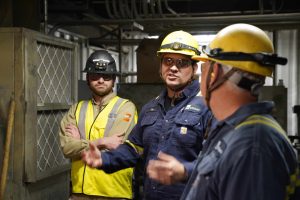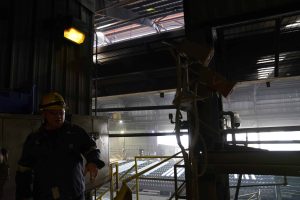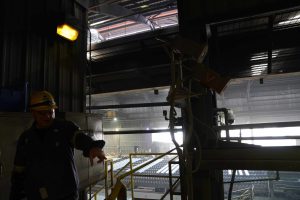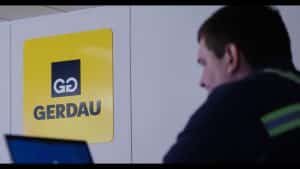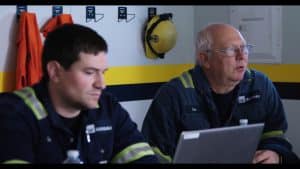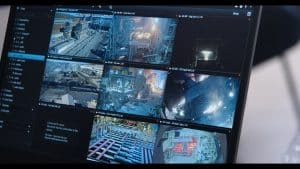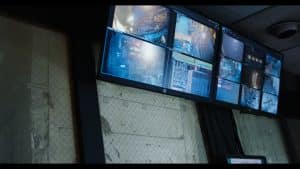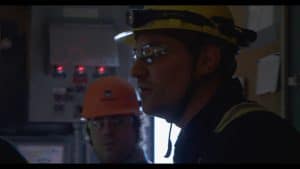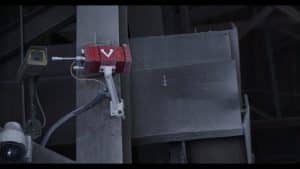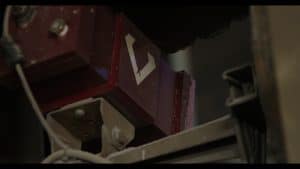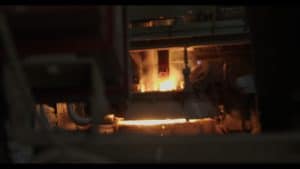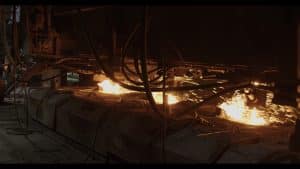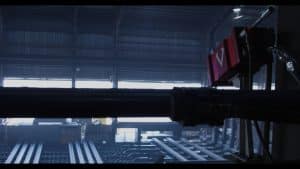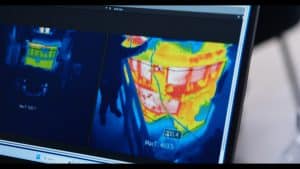How a leading global steel producer’s commitment to safety led to incorporating a thermal monitoring system
Viper thermal monitoring system implementation resulted in improved efficiency and product quality
Gerdau’s Molten Metal Pathway initiative was put into place to ensure all areas in which molten metal is present are monitored to protect their employees and equipment. The company engineering team’s decision to implement infrared monitoring has proven to be effective in maintaining a safe facility and has resulted in improved efficiency and product quality.
Company Overview
A leading global steel producer, Gerdau is a trusted name in the steel industry. Serving customers in more than 30 countries worldwide, the company has a strong focus on safety, sustainability, and innovation. Gerdau’s Molten Metal Pathway safety initiative was recognized in 2020 by the World Steel Association.
“Our mills utilize efficient and clean production practices, including the use of electric arc furnace (EAF) technology. This makes our steel one of the greenest choices available.” (Gerdau, 2023) Gerdau.com states, “We are committed to digital innovation, and to using technology to improve our business performance and customer experience.”
The Cartersville, Georgia mill has approximately 350 employees and runs four (4) crews 24/7. This mill produces beams, flats, angles, and channels that are commonly used in non-residential buildings, staircases, heavy-duty equipment, and decking. The melt shop casts seven different sizes. Viper conducted this study with two engineers managing the melt shop electrical maintenance team, Tom Wyant and Don Keller. The melt shop and electrical maintenance team consists of hourly employees, process engineers, automation technicians, and automation engineers.
Need for a Solution
Aligning with Gerdau’s Molten Metal Pathway initiative, Don said, “Our goals are safety first, then quality, then production.” When asked about the specific objective of their team, Tom shared that “the objective of the [melt shop] electrical maintenance team is to ensure everything is running safely and efficiently so we can produce high-quality steel.” Before implementing the Viper system, they tried different temperature monitoring solutions but did not find them successful in preventing safety issues. Among these methods, they conducted spot checks on equipment with pyrometers. They found data from pyrometers to be insufficient for their needs because the instruments did not provide thermal images or the ability to select regions of interest. They also conducted some testing with visual cameras, and Don commented, “They don’t tell you anything. You can’t see the infrared energy and that’s what we need.”
Tom shared some insight on their intention to use thermal data to predict failures and prevent a worst-case scenario event, such as a molten metal breakout. They wanted to use infrared camera systems to monitor equipment for safety and reliability. In addition to ladle monitoring, they wanted to monitor their main EBT transformer for issues. If an electrical connection overheated, it could damage the transformer and cause extensive damage and downtime. He and Don shared that new transformers are not readily available, and the lead time to order in addition to the expense and downtime would be devastating to their operation and production.
Don went on to say that they needed a thermal monitoring system that would write to their PLC. This would allow them to have constant temperature monitoring plus notifications with alarms. This would help them meet their goals of “safety first, then quality, then production.”
The Decision Process
Knowing they needed a comprehensive solution based on infrared monitoring, Tom found Viper Imaging from an online search in 2016. Andy Beck, Viper co-founder and vice president of sales and technology, met with him onsite and proposed a tundish monitoring application. Spurred on by Gerdau’s Molten Metal Pathway initiative developed out of the steel producer’s commitment to safety, this was the first Viper thermal monitoring system implemented at the Cartersville mill. The system protects the employees by notifying the team of any indications of a problem with the refractory materials.
Tom said, “Since we put the first system in seven years ago, we built a really good relationship with Viper and the team there, and that’s why we haven’t considered using anyone else or using any other systems.” He went on to say that ViperVision software development and new feature integrations over time confirm that the Gerdau team made the right decision.
The Solution in Action
The Viper monitoring system implemented for tundish monitoring back in 2016 consisted of a thermal camera, ViperVenom camera enclosure, and ViperVision software. Since then, the Gerdau team has added 13 cameras and enclosures. All cameras are connected to ViperVision software which communicates with the PLC and provides notification of anomalies. Don said the entire team utilizes ViperVision to keep an eye on the process and “identify problems before they materialize and we have a shutdown. They’re human, they’re going to miss things. When a machine is taking care of your monitoring, it’s very reliable.”
Gerdau engineers, Don and Tom, requested a new feature integration in 2023. They utilize Milestone VMS at their facility and knew it would be incredibly beneficial to be able to access ViperVision data and the thermal cameras in their facility directly through the VMS their entire team uses every day. Don was instrumental in working with Viper software developers, and the feature was made available in the summer of 2023. Having ViperVision integrate with Milestone XProtect via RTSP output “has been wonderful for us because now we have logs of the video in our camera system, and the [process operators] can see images along with normal [visual] cameras.”
Tom cites the ability to review video if a problem arose. He expressed, “That’s going to be really good for us in the future. We’re just starting, but we think it’s going to be one of the best features that you [Viper Imaging] have… It records 24/7 for us. We can keep the images and video for a month and it lets anybody in the shop view it.” He said their team appreciates that accessibility and how it helps them to solve problems on the spot.
Don and Tom appreciate that the integration with Milestone XProtect allows them to access ViperVision data, images, and video on their smartphones. Don explained that since all Gerdau company smartphones have a VPN connection to the plant, they do not have to be onsite to have access.
Specific Application and Results
Both engineers enthusiastically elaborated on the thermal monitoring applications they now rely on and specific instances of how the Viper monitoring system is helping them save time, operate safely, and increase productivity. Tom shared some insight on how they use thermal data to predict failures and prevent worst-case scenario events, such as a molten metal breakout. They consider their ladle monitoring application a resounding success. Tom explained that molten steel can easily penetrate the ladle refractory when it gets thin. It will burn a hole through it, resulting in uncontrolled molten steel onto the plant floor. “We have infrared camera systems monitoring our equipment for safety and reliability. They monitor the outside temperature of the ladles and the tundishes for hot spots which would indicate a potential weakness in the ladle refractory.” The aim is to ensure the molten steel is contained and controlled for the safety of their employees and also for equipment reliability. A breakout is dangerous and causes extensive damage. Their team uses ViperVision with an algorithm they developed to monitor and predict when the refractory is wearing excessively. “Because of that, we’ve gone one year without a ladle breakout. Before, we were lucky if we made it a month.”
“Because of that, we’ve gone one year without a ladle breakout. Before, we were lucky if we made it a month.”
In addition to ladle monitoring, Gerdau has a Viper thermal monitoring system in place to monitor their Electric Arc Furnace (EAF) transformer, which they regard as one of their most critical pieces of equipment. There are four thermal cameras installed to identify and alarm on any hot spots in electrical connections and to make sure the cooling system is working properly. He explained the importance of this by saying, “If we damage the transformer because we can’t catch an incident ahead of time and we have to change it out, we’re talking a week down of production that we’ve lost. So, having that predictive data is key to making sure we run efficiently and safely.” Since implementation of the Viper monitoring system, they cited a specific success. ViperVision indicated a hotspot, and they found that a pipe in the internal water cooling system had broken. It was causing a short circuit making it unable to cool all the equipment. Tom reported that they performed the necessary repairs and prevented a critical failure.
Another application for which they utilize thermal monitoring is what they refer to as the Missed Torch Cut System. It’s a repetitive process of the caster constantly cutting billets. They indicated that it’s an around-the-clock operation – cutting many hundreds of times per day. There is an operator assigned to watch the torches to make sure they are functioning properly, but they acknowledge that with the human element, there’s always a chance something can be missed. They collaborated on an idea to monitor for temperate differentials resulting from cut and separated billets. If a torch malfunctions and misses a cut, the billets will not separate. Now, with their system in place monitoring temperatures in the regions of interest set in ViperVision, the team receives an alarm if temperatures are beyond the parameters. This allows them to act quickly to make a manual cut, preventing disruption of the entire process. If a missed torch cut is not detected and corrected, it can cause hours of downtime.
Don went on to highlight the integration of the thermal cameras with Viper’s proprietary software. “What ViperVision offered us was the ability to write to the PLC where we could monitor seamlessly. It has been very helpful, especially from a safety standpoint. Our goals are safety first, then quality, then production.”
“What ViperVision offered us was the ability to write to the PLC where we could monitor seamlessly. It has been very helpful, especially from a safety standpoint.”
Conclusion
Gerdau’s ladle management philosophy coupled with the Viper thermal monitoring system is helping the melt shop achieve goals related to safety, quality, and production. Tom said, “It’s hard to put an exact number [monetary value] on it, but we know it’s reduced downtime, reduced scrap billets, and eliminated a critical safety issue.” He went on to say, “Because we run 24/7, anytime we have a disruption in the process, that time is gone. You can’t get it back. So every minute is one less minute of production we’re going to have that year.”
“It’s hard to put an exact number on it, but we know it’s reduced downtime, reduced scrap billets, and eliminated a critical safety issue.”
Tom and Don remarked that the melt shop electrical maintenance team is frequently coming up with new ways to utilize infrared technology and ViperVision to improve processes. They currently have 14 thermal cameras in place – with plans to add 2 more soon.
They affirm that other steel mills would benefit from thermal monitoring. They recommend following Gerdau’s core value of “safety first,” and then putting systems in place that will benefit production and efficiency. Use thermal monitoring systems to predict failure to address problems before they cause catastrophic events. This protects employees and helps maintain equipment. Tom commented, “Before, we would rely on people and their experience. Infrared technology is not taking away from that but supplementing it.” He believes IR technology paired with experienced personnel will make facilities safer.
FAQ
Common monitoring applications: AOD, BOF, EAF, LMF, Refractory-Lined Ladles, Substation Assets, Torpedo Cars, and Water Wall Leak Detection
➡️ How does the VMS integration feature work and what systems are compatible?
By selecting RTSP output in the ViperVision camera configuration, users can access critical information through a system they are already familiar with. While the ability to connect directly to a camera in the system has always been available, it provided only the thermal image without temperature measurement details. Now, anyone with permission to access the company VMS can obtain critical data at any given time. This advantage is particularly significant for real-time monitoring and response as the integration offers visibility of all the analysis tools embedded within ViperVision. Additionally, recording can be constant in the VMS if desired.
Notes:
- This feature is available in the ViperVision Ultra software package.
- Compatible VMS as of the study publish date include Avigilon, Milestone, Exacqvision, and Orchid Fusion. Further testing will confirm new additions.
- Company engineers maintain control of the ViperVision configuration. While those who view data through the VMS can initiate recording, they cannot adjust the software configuration.
➡️ How does the alarming feature integrate into other systems?
When a thermal camera detects a significant temperature increase or abnormal heat pattern, it can trigger an alert, notifying operators or automatically shutting down a specific operation. ViperVision software supports communication standards for connection to the plant control system including OPC, Modbus, select Allen-Bradley, or Siemens PLC via OPC or S7 Protocol, as well as physical I/Os such as relays and analog outputs. It can send a discrete signal into your system through external I/O devices or the camera’s built-in I/O. This integration enables rapid response, minimizing the time between detection and remedial actions.
➡️ Will the system still work in highly contaminated areas?
Advanced thermal cameras employ algorithms that can mitigate environmental challenges, providing reliable temperature measurements even in adverse conditions. The thermal cameras we use are designed for industrial settings and have an IP66 rating. When needed, we install the cameras in our ViperVenom camera enclosures which provide additional environmental protection. Options such as a front air knife or air intensifier are added for extremely dusty environments to keep the front window clean and free of contamination. Regular maintenance and calibration of the cameras are also essential to ensure accurate readings.
➡️ Which thermal cameras are right for this type of application?
The main factors are temperature and optics. The upper measurement limit of the FLIR A50/A70 is 1000°C (1832°F) while it’s 2000°C (3623°F) for the FLIR A400/A700. As for optics, a camera with a wide angle can help minimize the number of cameras needed. But, if you need to measure a very small spot size, high resolution is key. Viper engineers have extensive experience and training to make the best recommendations. FLIR thermal cameras are designed for industrial settings and have an IP66 rating. Cameras can be installed in our ViperVenom camera enclosures which provide additional environmental protection.
➡️ How is ViperVision software licensed?
We offer a perpetual license or annual renewal, as well as the option to incorporate the entire system into a HaaS (Hardware as a Service) contract. Benefits of annual renewal and HaaS include software updates since the last renewal date. Review software packages here.
➡️ What type of camera housing do you use for steel mill monitoring applications?
We install the thermal cameras in our ViperVenom camera enclosures which provide additional environmental protection. Options such as a front air knife or air intensifier are added for extremely dusty environments to keep the front window clean and free of contamination. (See case study video and photos for examples of these camera installations.)
Thermal imaging camera monitoring systems offer significant advantages in automating and optimizing processes within the steel industry. From precise temperature control and predictive maintenance to energy efficiency and quality control, these systems help steel manufacturers enhance operational safety, reduce costs, and improve overall productivity.
➡️ How do I get more information?
We have a recorded webinar about monitoring solutions for steel production! Here’s a link to watch the recording on YouTube. You can also download our datasheet, Steel Mill Refractory Monitoring Solutions, or contact us!
These advanced monitoring systems utilize infrared technology to capture and analyze thermal data, enabling numerous benefits in various stages of steel production. Here are a few key points:
- Temperature Monitoring: Thermal imaging cameras accurately measure temperatures in real-time, providing valuable data for monitoring and controlling critical steel processing stages such as heating, cooling, and annealing. This ensures optimal temperature conditions, reducing the risk of defects and ensuring product quality.
- Equipment Maintenance: By continuously monitoring the temperature of machinery and equipment, thermal imaging cameras can detect abnormal heat signatures that indicate potential malfunctions or impending failures. This enables proactive maintenance, preventing costly downtime and enhancing operational efficiency.
- Energy Efficiency: Thermal imaging cameras help identify areas of excessive heat loss or energy consumption in steel production facilities. By pinpointing insulation gaps, leakages, or inefficient heating processes, these systems enable companies to optimize energy usage, reduce waste, and minimize environmental impact.
- Safety Enhancement: We all know that steel production involves hazardous environments and extremely high-temperature operations. Thermal imaging cameras can detect hotspots, overheating equipment, or potential fire risks, allowing for swift action to prevent accidents and ensure the safety of personnel.
- Quality Control: By capturing detailed thermal images, these cameras aid in the identification of defects such as cracks, porosity, or uneven cooling in steel products. Automated thermal analysis algorithms can quickly analyze large datasets, ensuring consistent quality control and reducing the likelihood of faulty products reaching the market.
- Process Optimization: Continuous monitoring with thermal imaging cameras provides valuable data for process optimization in steel manufacturing. By analyzing temperature distribution and patterns, companies can optimize workflows and fine-tune parameters to maximize productivity and output.

